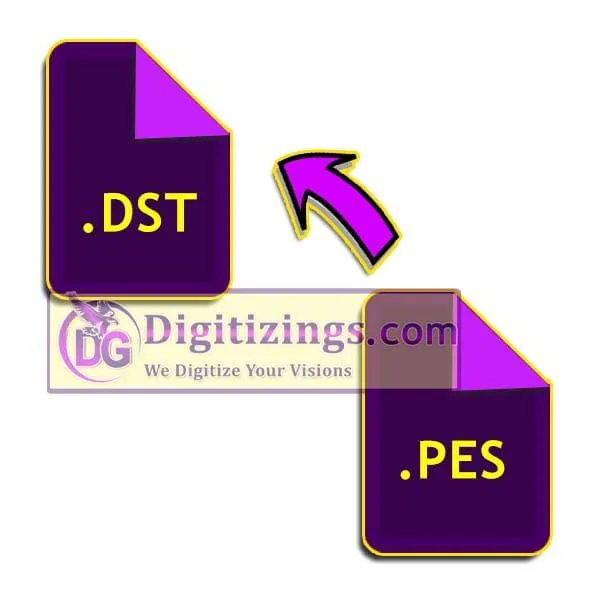OFM Embroidery File Converter: Easily Convert Your Designs
Convert Embroidery Files with Ease: Using the OFM File Converter
Convert Embroidery Files with Ease: Using the OFM File Converter
My Editor (Embroidery File Converter)
Overview
For an individual who wants to adjust his designs using simple embroidery threads, this utility has an excellent benefit. The program allows you to view your designs with all matching thread colors, make adjustments, and add information.
It also offers the capacity for better production and material management, and offers a variety of browsing and saving options. By using this latest embroidery software you are able to convert your embroidery file for free to another embroidery machine file format
Supported File Formats:
JEF, KSM, M3, MLS, NGS, PEC, PESART, CND, DST, SEW, SHV, SST, DSZ,TBF, VIP, XXX, DAB, EXP, HUS, , PCM, PCS, SAS, SWF, TAP, and a some of others.
Features:
Functions such as designing a printable canvas of a pattern for needlework, editing stitches, sampling embroidery stitch-outs, exporting a design to an image file, and resizing patterns are frequently available.
Conclusion
Their proprietary file format is .ngs, so be careful if you edit or create free embroidery files converter that you do not acquire in that format. I had inadvertently set my software to save in .ngs format instead of exporting in .pes format, which required my Brother embroidery machine not to accept any of the designs we were editing.
Ofm embroidery file converter
Embroidery machines operate on specific file formats, such as DST, PES, JEF, and more, which are not universally compatible across all brands. For instance, if you have a design in the PES format (used by Brother machines) but your machine only reads DST (Tajima format), you’ll need to convert the file to ensure it works properly. Without file format converters, designs that you’ve spent time or money on would be useless on incompatible machines.
File format converters save you the hassle and expense of purchasing new designs for different machines. They are also crucial for embroidery professionals who work with clients using a variety of machine brands. Professionals often handle clients with multiple embroidery machines, and a converter ensures they can deliver the same design in different formats without re-digitizing the design from scratch.
Types of Machine Embroidery Files
Not all embroidery files are created equal, and conversion from one type of file to another might not always yield good results.
Here’s a quick overview of embroidery file format types so you can understand limitations.
A. Native Files (Design, All-in-One, or Outline Files)
Native files are created and edited in your specific embroidery software. Examples include EMB (Wilcom), ART (Bernina), and JAN (Janome).
These design files contain the most extensive design information of all file types and can be scaled without decreased design integrity and converted to any other format without information loss.
However, embroidery machines cannot read native design files, so you must first convert or export the design to a machine file.
B. Machine Files (Stitch Files)
Machine embroidery file formats are specific to different brands of embroidery machines. Examples include JEF, PES, HUS, and XXX for Janome, Brother, Husqvarna, and Singer, respectively.
Machine files are less information-rich than native files as they don’t contain object information. As such, there are limitations to how much scaling you can successfully do within your software.
Now, you can convert machine files from one format to another (for example, to a PES file from a JEF file), but always spot-check after conversion. If you have a native file format of a design, instead opt to convert this type for more consistent results.
Also, converting a machine file to the more complex native file type isn’t perfect.
Your software may attempt to recreate the object properties, but you won’t have as much control over a design converted to a native file as you would a design that was created first in a native file format.
A Note About DST Files
DST files (Data Stitch Tajima) are an old file format that most embroidery machines can read. They are even less complex than machine files and don’t contain thread color information.
You can convert a DST file to your machine-specific file if you’d like, but the machine file will still not contain color information.
Steps to Convert OFM to Word Online
Step 1: Choosing a Trustworthy Online Converter
To convert an OFM file to a Word document, you'll need a dependable online converter.
A reliable OFM file converter will ensure a smooth conversion process.
Step 2: Upload Your OFM File
Most online converters let you easily drag and drop the file or click an upload button to pick it from your device.
Step 3: Choose Output Format
Next, select "Word" or ".docx" as the output format.
Essential step: Choosing this format as it directs the converter on which format you want your OFM file to be transformed into.
Step 4: Convert and Download
Click the "convert" button to start the process.
It might take a moment, depending on the file size and server speed.
Once the conversion is complete, download the converted Word document to your device.



Tegs:
Search
Recent Posts
-
Hawaiian Flower Embroidery Patterns: Discover Stunning Embroidery Designs Inspired by Tropical Blooms
Apr 14 2025
-
A Journey Back in Time: 19th Century Embroidery Techniques
Apr 14 2025
-
Brother PE Design Next V9: Take Your Embroidery to the Next Level
Apr 14 2025
-
Find the Perfect DMC Embroidery Floss at Hobby Lobby: A Comprehensive Guide
Apr 14 2025
Subscribe to Updates
Get the latest posts and fashion insights directly in your inbox.